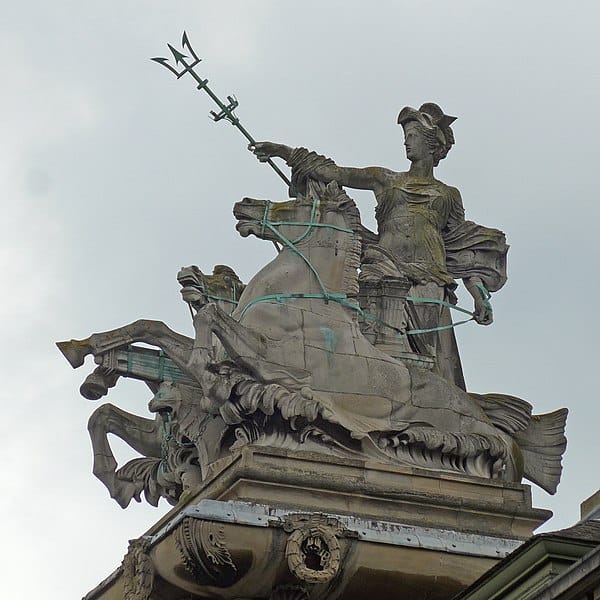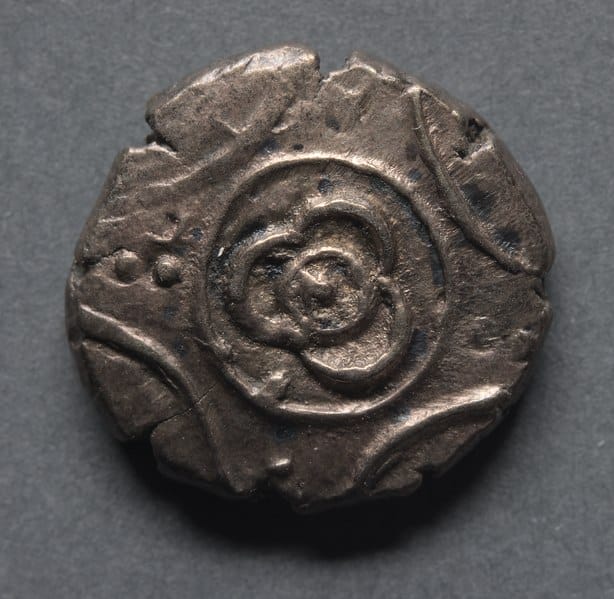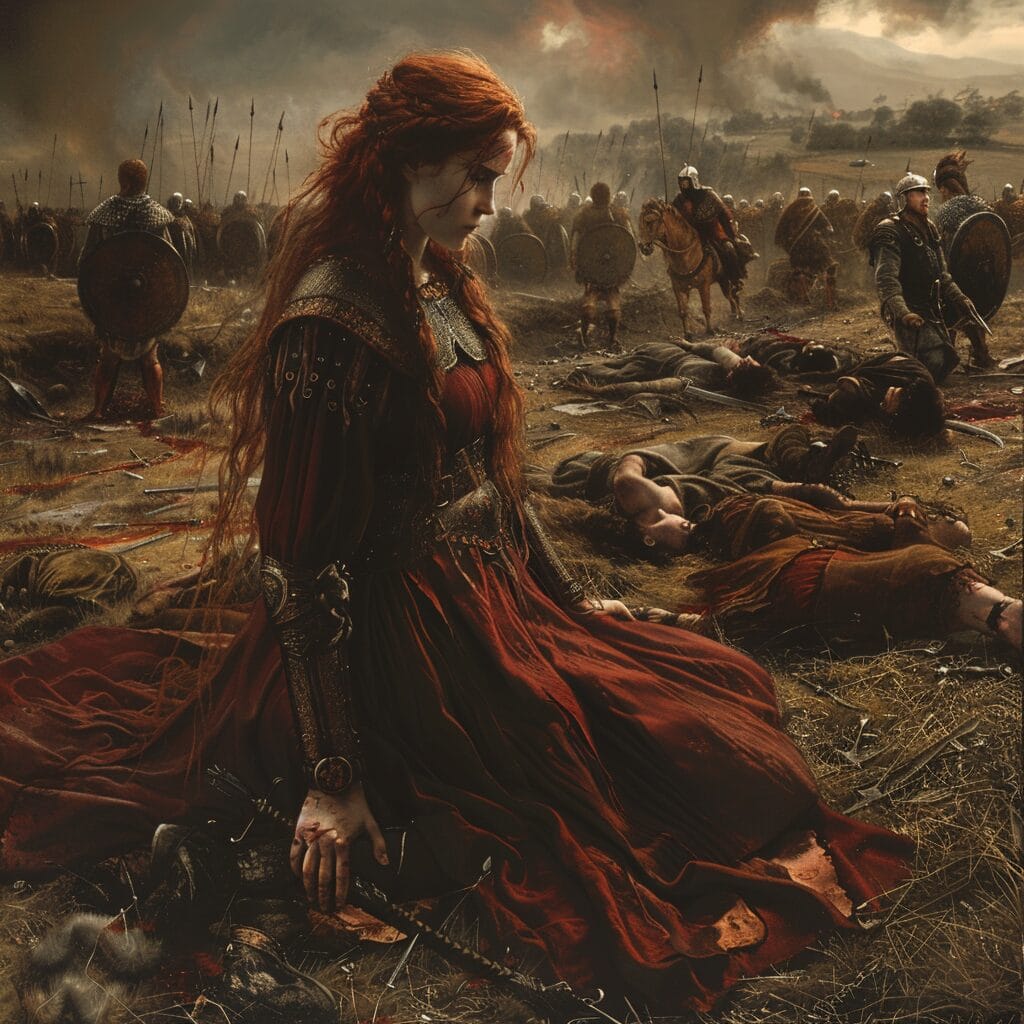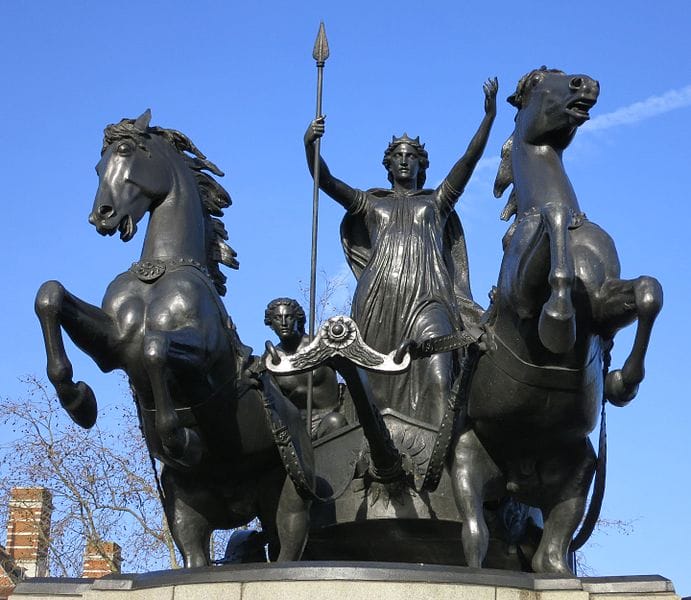Boudica, often spelled Boadicea, stands out in history as the warrior queen who led her people, the Iceni tribe, in a formidable revolt against Roman occupation in Britain. Her legacy is woven into the fabric of British history, encapsulating the struggle of the Britons against imperial rule in the first century AD. The extent of Boudica’s impact is evident through the scars left on Roman Britain following the sacking of cities such as London, Colchester, and St. Albans as her forces marched ruthlessly against the Roman establishment.
A violent uprising led by Boudica in AD 60-61 highlights a defining moment in the history of the British Isles. It was marked by a rare instance of unity among the local tribes who rallied behind her leadership against a common oppressor. Despite the ultimate suppression of the revolt, Boudica’s actions left an unforgettable mark on the cultural and political landscape of ancient Britain.
Her story, seemingly larger than life, has been reconstructed through a combination of archaeological discoveries and classical writings, allowing for a deeper understanding of her personal background, strategic insight, and the fierce determination that fueled her rebellion.

Key Takeaways
- Boudica was a queen leading the Iceni tribe in a revolt against Rome.
- Her leadership highlighted the resistance of Britons against the Roman conquest.
- Her legacy is preserved in history and archaeology, reflecting her cultural significance.
Historical Context
The historical context of Boudica’s uprising is deeply intertwined with the Roman conquest of Britain, the governance of the Iceni tribe in East Anglia, and the legacy of King Prasutagus. These events set the stage for one of the most renowned rebellions against Roman rule.
Roman Conquest of Britain
The Roman conquest of Britain was initiated by Emperor Claudius in 43 AD. This decisive military campaign brought the islands into the ambit of the Roman Empire as a province.
Over the next few decades, Roman occupation expanded, imposing Roman rule over the British Isles and integrating them into the empire’s extensive dominions.
The Iceni and East Anglia
The Iceni tribe, indigenous to what is now known as East Anglia, England, maintained a level of autonomy as an independent ally of Rome.
This region was recognized for its relative prosperity and stability during the early phases of Roman occupation. The Iceni’s relationship with Rome was complex, balancing cooperation with a fierce preservation of their local customs and governance.
Prasutagus’s Legacy
King Prasutagus, the ruler of the Iceni, devised a will that bequeathed his kingdom jointly to his daughters and the Roman Empire, aiming to secure his family’s position and authority.
However, following his death, Roman authorities annexed the kingdom, disregarding his intentions and triggering a brutal crisis. The dispute over Prasutagus’s legacy precipitated the conflict that led to Boudica’s revolt against Roman rule.

Boudica’s Personal Background
Boudica, also spelled as Boadicea, stands as a national heroine. Her life is a testament to female leadership during a time when women were rarely recognized as leaders.
Family and Lineage
Boudica was married to King Prasutagus of the Iceni tribe. The couple had two daughters, whose names remain unknown to history. As queen and a mother, Boudica’s personal life was deeply intertwined with her family, underscoring her duties to her family and tribe.
Ascension to Leadership
Upon the death of her husband, Boudica ascended to leadership under controversial circumstances due to the Roman refusal to acknowledge the sovereignty of her lineage. Despite Roman law dictating otherwise, it was the wish of her husband that his kingdom be left jointly to his daughters and the Roman emperor, hoping to secure his family and kingdom’s safety.
Significance of Female Leadership
Boudica’s rise as a warrior queen was significant in an age when female leadership was not only rare but often disregarded. Her command during a revolt against the Roman occupation of Britain solidified her status as an iconic and sacred figure.
Her leadership demonstrates the capabilities of women to hold positions of power and influence, defying the gender norms of her time.
The Revolt of AD 60-61
In AD 60-61, the revolt led by Boudica, Queen of the Iceni, was one of the most significant uprisings against the Roman Empire in Britain. The rebellion saw major engagements and severe consequences for the indigenous tribes and the Romans alike.
Causes of the Rebellion
The rebellion was sparked by a series of injustices inflicted on the Iceni tribe and their allies. After the death of Boudica’s husband, King Prasutagus, the Romans confiscated property and land that they believed fell to them as a right. Boudica and her daughters were subjected to brutal treatment, further stoking the flames of revolt.
Boudica’s Uprising
Under her leadership, the rebels first targeted Camulodunum (modern Colchester), a significant Roman settlement. The city was razed, and the temple of Claudius was destroyed – a symbolic act against Roman imperialism and the deification of the emperor.

Soon after, Londinium (London) and Verulamium (St. Albans) fell to the rebels, who massacred the inhabitants and burnt the cities to the ground.
Major Battles
The Roman governor of the province, Suetonius Paulinus, initially occupied Anglesey and hurried to confront the uprising. The decisive battle took place along Watling Street, where the well-disciplined Roman army achieved a crucial victory.
Despite their numbers, the Britons were defeated, and the revolt was quelled, leaving significant casualties in its wake and marking the end of the most formidable challenge to Roman rule in Britain.
Cultural and Political Impact
The cultural and political impact of Boudica extends from the immediate effects of her uprising against Roman rule to her enduring legacy as a symbol of justice and independence.
Aftermath of the Revolt
The rebellion led by Boudica in Roman Britain was a significant event that represented the struggle for justice and freedom among the indigenous Celtic tribes.
Following the suppression of the revolt, Roman historian Tacitus and Greek-Roman historian Cassius Dio detailed the events, showcasing the resistance against Roman imperialism. Her ultimate fate remains a mystery. She probably died soon after the revolt or committed suicide to avoid being part of the triumph in Rome.
The Roman response to the uprising involved a more cautious approach toward the governance of the British Isles, suggesting a shift in political strategy aimed at preventing future insurrections.
Boudica’s Legacy
Her stance against Rome carved out her position as a national heroine in the British cultural memory. Her story has been interpreted through various lenses over the centuries.
In England, Boudica has become an emblem of resilience, encapsulated by her statue on Westminster Bridge, which faces the Houses of Parliament. This honors her as a symbol of British independence and reflects her lasting importance across Wales and England.

Source: Paul Walter, CC BY 2.0 https://creativecommons.org/licenses/by/2.0, via Wikimedia Commons
Her legacy continues to inspire discussions around freedom and cultural identity within the context of the British Isles’ historical landscape. Historical accounts by Tacitus and Dio have immortalized her as a figure of immense character and determination.
Boudica in Literature and Art
Boudica’s uprising against Roman rule in 1st century AD Britain has been a subject of fascination, depicted variously in literature and art throughout the centuries. Her portrayal has evolved from Roman historical narratives to modern cultural memorials, reflecting varying interpretations of her legacy.
Historical Accounts
Roman historians Tacitus and Cassius Dio are two principal sources for the historical accounts of her rebellion. Tacitus, in his work Annals, offers a detailed narrative of Boudica’s revolt, emphasizing the cruelty of the Roman administration and the bravery of Boudica.
Conversely, Cassius Dio’s account, written much later, presents a dramatized version of events, including a speech attributed to Boudica, which likely reflects the historian’s own interpretation rather than actual historical fact. These accounts form not only the backbone of our modern understanding of Boudica but have also influenced how she is represented in later dramatic and literary works.
Modern Portrayals and Memorials
In more recent times, she has been celebrated as a national heroine and a symbol of resistance against oppression. Her story has been adapted in multiple literary works, including novels, plays, and poems. The transformation of Boudica’s image into various forms of art—from public sculptures to paintings—further illustrates her enduring legacy.
A notable example is the prominent statue of Boudica with her daughters on Westminster Bridge, which portrays her as a powerful and defiant figure. This memorial is a testament to her status as an iconic figure of resistance and national identity in Britain.
Archaeological Insights
Excavations and Discoveries
Archaeological efforts have unearthed evidence of Boudica’s rebellion in several Roman settlements. At Camulodunum (modern-day Colchester), excavations reveal layers of ash and debris dating to the period of Boudica’s revolt, signifying the widespread burning and destruction documented by ancient writers.
London and Verulamium (modern-day St. Albans) similarly bear the scars of conflagration, with thick, burnt layers that corroborate historical accounts of the cities being razed. The field of archaeology in Roman Britain, through various digs and analyses, continues to provide insights regarding the Britannia of Boudica’s time.
Notable discoveries include Roman artifacts, such as coins, pottery, and weapons, that tell a story of the conflict and daily life during the era. These findings not only confirm historical records but also offer a glimpse into the environment where Boudica and her tribe made their last stand against Roman rule.
People Also Ask:
What was Boudica most known for?
She is renowned for her leadership during a significant rebellion against the Roman Empire in 60-61 AD.
Under her command, her forces destroyed several Roman towns and caused extensive damage, earning her a place in history as a symbol of the fight against oppression.
How did Boudica die?
The precise details of her death remain a matter of historical debate.
Some suggest she poisoned herself to avoid capture after her forces were defeated in battle, while others speculate she may have died of illness or injury. The exact cause of her death is not conclusively known.
Who was Boudica’s husband?
Boudica was married to Prasutagus, who was the king of the Iceni tribe.
He ruled as a nominally independent ally or client king of Rome, and his death was a significant factor leading up to her uprising against the Roman occupation.
What can be told about Boudica’s daughters?
Historical accounts mention that Boudica had daughters, although their exact number and names are not recorded.
They are noted to have been subjected to brutal treatment by the Romans, which fueled Boudica’s determination to lead her people against Roman rule.
How is Boudica’s name pronounced?
Boudica’s name is typically pronounced as /ˈbuːdɪkə/ (Boo-di-ka).
There has been considerable variation in the spelling and pronunciation of her name over the centuries.
What does the name Boudica mean?
The name Boudica translates roughly to “victory-bringer” or “victorious.”
Her name is reflective of the hope and determination she embodied for her people during her revolt against the Romans.
Hello, my name is Vladimir, and I am a part of the Roman-empire writing team.
I am a historian, and history is an integral part of my life.
To be honest, while I was in school, I didn’t like history so how did I end up studying it? Well, for that, I have to thank history-based strategy PC games. Thank you so much, Europa Universalis IV, and thank you, Medieval Total War.
Since games made me fall in love with history, I completed bachelor studies at Filozofski Fakultet Niš, a part of the University of Niš. My bachelor’s thesis was about Julis Caesar. Soon, I completed my master’s studies at the same university.
For years now, I have been working as a teacher in a local elementary school, but my passion for writing isn’t fulfilled, so I decided to pursue that ambition online. There were a few gigs, but most of them were not history-related.
Then I stumbled upon roman-empire.com, and now I am a part of something bigger. No, I am not a part of the ancient Roman Empire but of a creative writing team where I have the freedom to write about whatever I want. Yes, even about Star Wars. Stay tuned for that.
Anyway, I am better at writing about Rome than writing about me. But if you would like to contact me for any reason, you can do it at contact@roman-empire.net. Except for negative reviews, of course. 😀
Kind regards,
Vladimir
